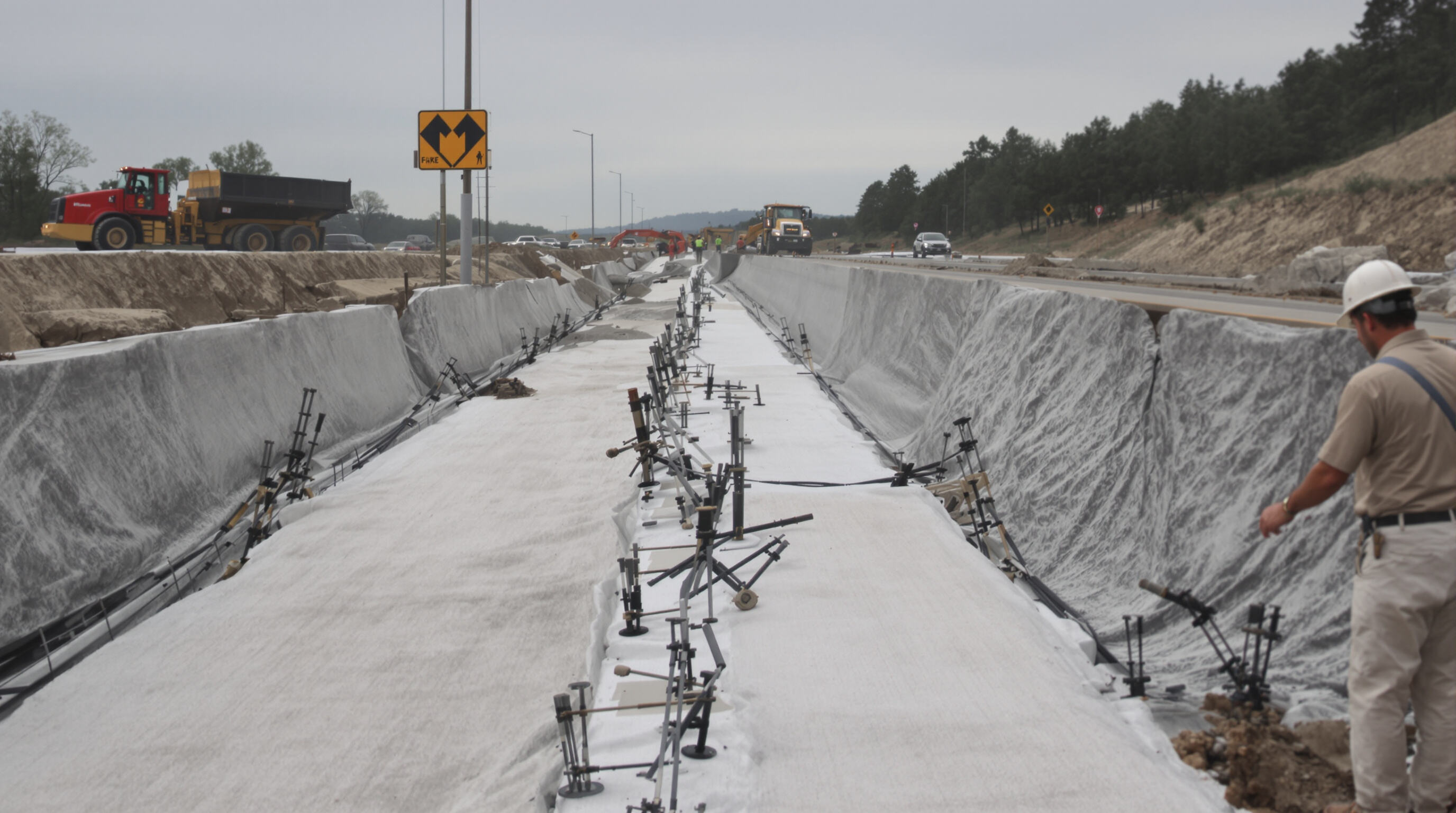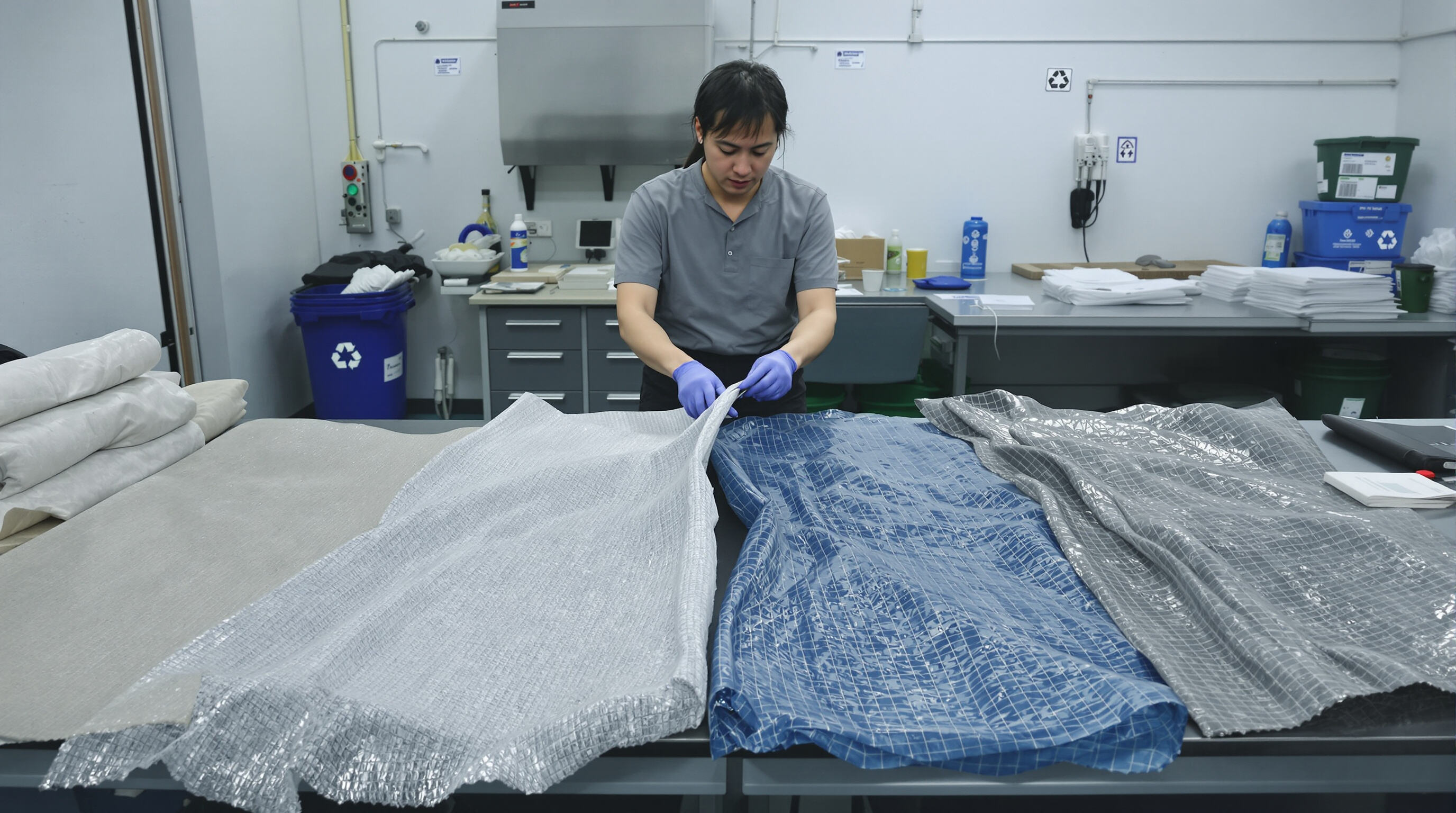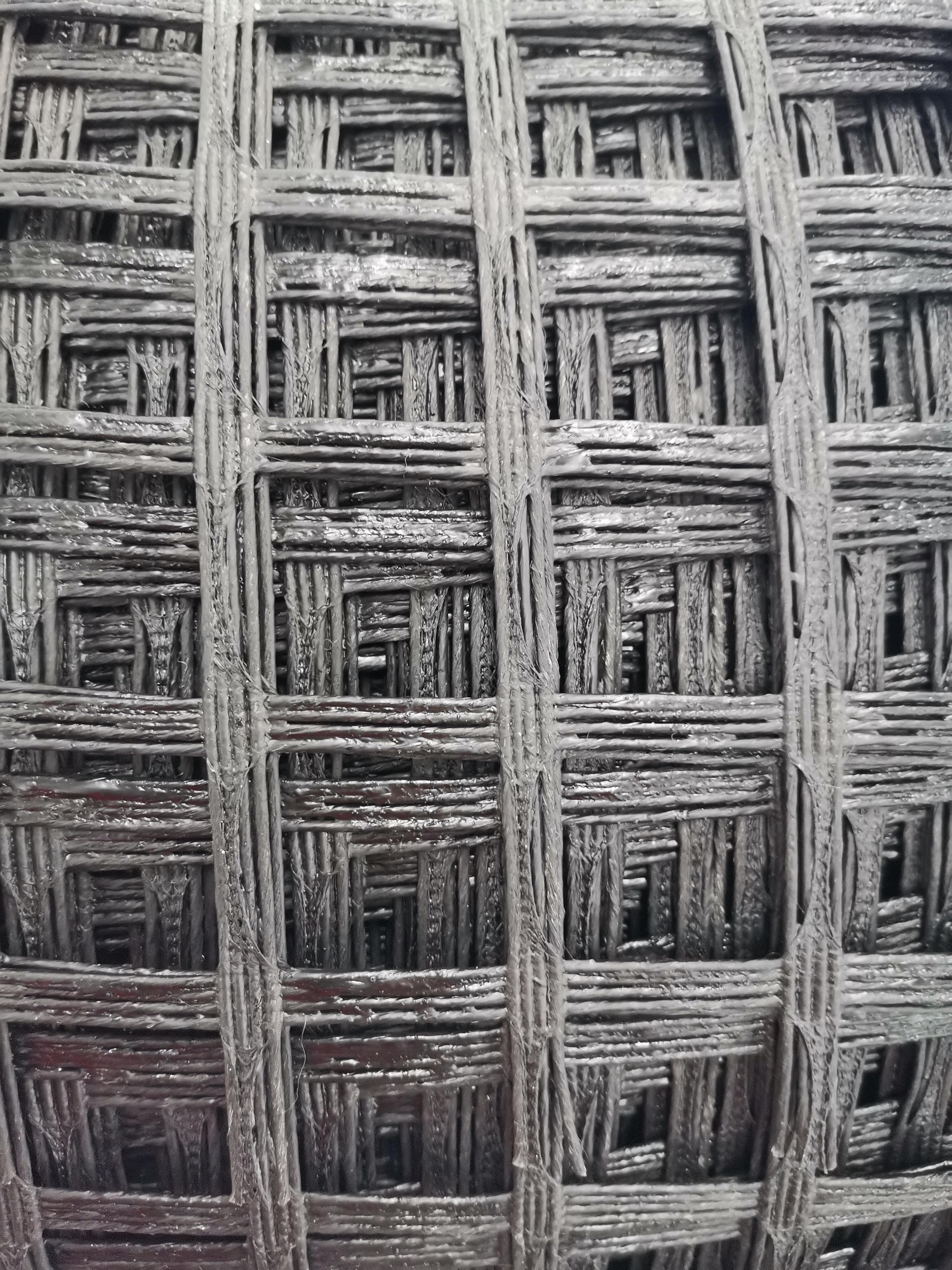The Environmental Role of Geo Fabric in Sustainable Infrastructure
Understanding Geo Fabric and Its Environmental Applications
Geo fabric is basically a permeable textile that helps stabilize soil, filters out debris, and controls erosion. We see it all over the place reinforcing slopes, managing water flow, and keeping contaminants at bay especially around delicate ecosystems. Take non-woven geotextiles for example they work great separating different soil layers but still let water through which cuts down on sediment washing away after storms. A recent market report from 2023 actually found that these materials stop soil from breaking down in about 7 out of 10 coastal protection projects worldwide. Pretty impressive when we think about how rising sea levels are making shoreline erosion such a big problem.
Principle: How Geo Fabric Supports Ecological Balance
Geo fabric supports ecological balance by mimicking natural filtration processes in two primary ways:
- Soil Stabilization: Woven geotextiles anchor root systems, promoting vegetation growth on unstable slopes.
- Contaminant Filtration: In wetland restoration, these materials filter heavy metals and pollutants from stormwater, protecting aquatic habitats.
This dual functionality reduces reliance on concrete and steel, lowering the carbon footprint of infrastructure projects by up to 30% compared to conventional methods.
Trend: Integration of Geo Fabric in Urban Green Infrastructure
More cities these days are starting to use geo fabric in things like permeable pavements and green roofs as a way to fight back against urban heat islands and handle stormwater better. Take Atlanta for instance they've installed bioswales lined with geotextiles which manage about 40 percent more rainwater each year compared to regular old asphalt drainage systems. What we're seeing here is basically a trend where municipalities are turning to natural infrastructure options that actually work well for the environment while still getting the job done structurally speaking.
Case Study: Wetland Restoration Using Geotextiles in Florida
A restoration effort in parts of the Everglades back in 2022 used biodegradable jute fabric to fix up around 12 acres where the marshland had been worn away over time. What happened next was pretty impressive actually. The woven material held the soil together just long enough so that mangrove trees could take root properly. Within about 18 months, roughly 9 out of 10 square feet were covered with plants again. When looking at what it all cost compared to traditional methods like building rock walls, there was a massive difference. Costs dropped by nearly two thirds, which shows why these kinds of fabric solutions might work better when trying to restore ecosystems on larger scales without breaking the bank.
Cost-Effectiveness of Geo Fabric in Civil Engineering and Large-Scale Projects

Long-Term Savings Through Reduced Maintenance and Erosion Control
Using geo fabric actually saves money in the long run because it stops soil from moving around so much and protects infrastructure from wearing down. Take this highway project they did in Southeast Asia back in 2024 for example. The folks there saw their maintenance bills drop by about 62 percent after five years when they switched to those strong geotextile materials. Traditional methods usually need constant fixing and reshaping of the ground, but geo fabric just holds everything together through all sorts of weather changes and temperature swings. Plus, it helps plants grow better too, which adds another layer of protection against erosion problems.
Comparative Analysis: Geo Fabric vs. Traditional Soil Stabilization Methods
When it comes to getting better results for less money, geo fabric beats traditional approaches hands down. For road subgrade applications specifically, these materials cut down on aggregate needs anywhere from a quarter to half what would be required if using standard gravel layering techniques. The numbers tell quite a story actually concrete retaining walls end up costing around 35 percent more over their lifetime when compared against geotextile reinforced slopes. Why? Well, there's just so much more material needed plus extra labor involved in construction. What makes things even better nowadays are these new hybrid geo fabric systems that combine both filtration capabilities and structural reinforcement all within one single layer installation. This kind of integration really adds to the overall value proposition for many civil engineering projects.
Data Point: 40% Cost Reduction in Highway Construction Using Geotextiles (FHWA, 2022)
The Federal Highway Administration’s 2022 case study found a $1.2M/km savings in Midwest U.S. road projects through strategic geotextile use. Key drivers included:
- Reduced aggregate transport via local soil stabilization
- Elimination of 83% of drainage culvert installations
- 70% decrease in vegetation maintenance frequency
These results underscore the economic and logistical advantages of integrating geotextiles into transportation infrastructure.
Strategy: Optimizing Material Use in Civil Engineering With Geo Fabric
More engineers these days are moving toward design approaches that pair the right geotextile tensile strength (ranging from around 800 to as much as 10,000 Newtons per meter) with what the actual loads will be on site. Take for instance a recent slope stabilization job where they saved nearly 19 percent on costs simply by mixing nonwoven filtration fabrics together with those biaxial reinforcement grids rather than going all out with expensive single material solutions. The whole point here is avoiding unnecessary spending without compromising safety margins. And when done properly, this method cuts down on wasted resources while still giving good results lasting about 15 years even in areas where erosion is a constant problem.
Erosion Control, Soil Stabilization, and Drainage Applications of Geo Fabric
Mechanisms of Soil Stabilization with Geotextile Fabrics
Geo fabric reinforces soil structures by distributing loads evenly, preventing shifting or subsidence. Its permeability allows water infiltration while filtering fine particlesâ€"essential for maintaining integrity in highways, embankments, and foundations. When placed between soil layers, it prevents intermixing and reduces subsidence risks by up to 60% in granular soils.
Erosion Control Using Geotextiles in Coastal and Riverbank Environments
Along coastlines and rivers, geotextiles serve as protective barriers against soil loss caused by waves and tidal forces. Many nonwoven types get placed under rocks or plants to stop bank erosion. These materials can handle pretty impressive stress too, around 800 Newtons per meter actually. That means they hold up well when floods hit, keeping valuable topsoil in place and reducing the mess of sediment getting washed into our water systems. For engineers working on these projects, this kind of durability makes all the difference between success and costly failures down the road.
Case Study: Post-Wildfire Slope Stabilization in California
Following the 2021 Dixie Fire, geotextile blankets were deployed on burned slopes near Lake Almanor. The fabric stabilized ash-laden soils, reducing post-fire erosion by 75% during winter storms. Native grass seeds embedded in the textile matrix developed into a robust root network, enabling full slope revegetation within 12 months.
How Geo Fabric Enhances Subsurface Drainage Systems
Geo fabric improves subsurface drainage by preventing clogging in perforated pipes and aggregate layers. In a retention pond application, woven geotextile increased water flow rates by 40% compared to gravel-only systems. Its filtration capability also lowered maintenance costs by blocking silt ingress while maintaining optimal hydraulic conductivity.
Sustainability Challenges and Innovations in Geo Fabric Technology

Environmental Benefits and Sustainability of Geotextiles in Construction
Geofabric plays a big role in making construction more sustainable because it helps stop soil from washing away, uses fewer materials overall, and cuts down on carbon emissions too. When looking at slope stabilization work, these fabrics actually reduce the carbon footprint compared to traditional concrete walls something like 58% according to recent studies from Green Infrastructure in 2023. What makes them special is their ability to let water pass through while still filtering out dirt and debris. This means less sediment ends up in rivers and lakes where it could damage fish populations and other underwater life forms.
Reduction of Environmental Pollution Through Bio-Based Polymers
New developments in bio based polymers made from things like plant starch and algae are helping tackle the problem of microplastics coming from those synthetic geotextiles we see everywhere these days. The good news is these eco friendly alternatives can break down within around 12 to maybe even 18 months when placed in proper composting environments, which means they won't hang around in the soil forever causing problems. There's still work to be done though because right now most bio geotextiles aren't quite as strong as traditional polypropylene materials. They typically have about 70 percent of the tensile strength, so for now they're better suited for lighter duty jobs such as those temporary erosion control blankets used on construction sites where full strength isn't absolutely critical.
Controversy Analysis: Trade-Offs Between Synthetic Durability and Biodegradability
There's a real problem facing the industry right now. Synthetic geotextiles can stick around for about 50 to 100 years, but they end up creating microplastic pollution issues. On the flip side, biodegradable materials break down way too fast for anything meant to last permanently. Take those Himalayan road projects for instance. The jute based fabrics had to be replaced every five years, which is actually four times faster than what happens with PET products. Some companies are trying hybrid approaches though. Things like UV stabilized biopolymers might offer a middle ground solution. These materials could potentially last between 25 and 30 years before starting to break down partially, giving engineers something that works better than either extreme option.
Industry Paradox: High Performance vs. Long-Term Environmental Footprint
The need for long lasting geotextiles creates something of a dilemma when it comes to being environmentally friendly. Take HDPE membranes for example those commonly used in landfill construction can stick around for well over 450 years before breaking down naturally. According to a recent industry poll from 2023, most civil engineers still put durability first rather than going green when they choose materials for their projects. About two thirds actually prefer materials that last longer even if they aren't exactly planet friendly. But things are changing. Some manufacturers have started making geotextiles with recycled content now containing around 40 percent post industrial plastic waste. These products hold up pretty well too maintaining about 92 percent of what traditional materials offer. And there's another bonus these recycled options help keep roughly 8.2 million metric tons of plastic out of landfills each year.
The Future of Eco-Friendly Geo Fabric: Biodegradable and Natural Fiber Solutions
Biodegradable Geotextiles for Ground Improvement in Temporary Works
Biodegradable geo fabrics are increasingly used in short-term applications such as road repairs and event site stabilization. These plant-based materials decompose within 2–5 years, eliminating long-term soil contamination. Starch-infused variants, for example, support vegetation regrowth in post-construction landscapes without requiring removal.
Cost and Availability of Natural Fiber Geotextiles vs. Synthetic Counterparts
Geotextiles made from natural fibers such as jute, coir, and hemp tend to cost around 15 to 30 percent more initially compared to synthetic alternatives, although they do provide better long term environmental benefits throughout their life cycle. The problem is finding enough raw materials for large scale projects since worldwide jute output barely covers about 8% of what civil engineers need for construction work. There's some good news though. New approaches that mix natural fibers with recycled synthetic materials are starting to close both the performance differences and the price difference between these options. These hybrid products represent an interesting middle ground that might help bridge the gap until natural fiber production can catch up with industry demands.
Case Study: Jute-Based Geo Fabric Use in Himalayan Erosion Control
A 2023 slope stabilization project in the Himalayas achieved 92% erosion reduction using jute geotextiles layered with native grasses. The system outperformed plastic meshes, which failed under monsoon conditions. Research from the Journal of Cleaner Production shows natural fibers retain 40% more moisture than synthetics, enhancing plant establishment in fragile ecosystems.
Strategy: Scaling Production of Eco-Friendly Geotextiles Without Compromising Strength
Three innovations are advancing scalable production of eco-friendly geotextiles:
- Enzyme treatments that increase natural fiber durability by 200%
- Modular manufacturing systems that reduce minimum batch sizes by 65%
- Waste-to-fabric recycling that converts agricultural byproducts into reinforcement grids
These developments aim to halve the cost premium of biodegradable geo fabrics by 2028 while meeting ASTM strength standards for heavy civil engineering applications.
FAQ
What is geo fabric and how is it used?
Geo fabric is a type of permeable textile used to stabilize soil, filter debris, control erosion, and support infrastructure. It's commonly used in slope reinforcement, water flow management, and wetland restoration.
How does geo fabric help in urban infrastructure?
Geo fabric is used in urban settings for permeable pavements and green roofs, which help manage stormwater, mitigate urban heat islands, and promote environmental sustainability.
Are there cost benefits to using geo fabric in construction?
Yes, using geo fabric can result in long-term cost savings through reduced maintenance needs, better erosion control, and decreased use of materials compared to traditional construction methods.
What are the sustainability challenges associated with geotextiles?
Sustainability challenges include balancing the durability of synthetic geotextiles with the environmental impact of microplastic pollution and finding effective biodegradable alternatives.
Table of Contents
- The Environmental Role of Geo Fabric in Sustainable Infrastructure
- Cost-Effectiveness of Geo Fabric in Civil Engineering and Large-Scale Projects
- Erosion Control, Soil Stabilization, and Drainage Applications of Geo Fabric
- Sustainability Challenges and Innovations in Geo Fabric Technology
- The Future of Eco-Friendly Geo Fabric: Biodegradable and Natural Fiber Solutions
- FAQ

